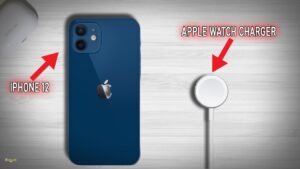Are you puzzled by the seemingly complex readings on your battery charger? Wondering how to decipher the numbers and symbols to determine the charging status? Look no further! In this article, we will guide you through the process of reading a battery charger, making it easier than ever to understand and monitor the charging progress. By mastering this skill, you will be able to efficiently maintain and extend the life of your batteries. So, let’s dive in and demystify the art of reading a battery charger!
How To Read A Battery Charger
Introduction
A battery charger is an essential device that helps keep our batteries charged and ready for use. Whether you are using a battery charger for your car, phone, or other electronic devices, understanding how to read the information displayed on the charger is crucial. This article will guide you through the process of reading a battery charger, ensuring you can effectively and safely charge your batteries.The Basics of Battery Chargers
Before diving into how to read a battery charger, let's first understand the basics of battery chargers. Battery chargers come in various types and sizes, but they all function with the same goal in mind – to recharge batteries. Here are a few key components and terms associated with battery chargers:
- Voltage: Battery chargers are designed to supply a specific voltage to the battery during the charging process. Common voltage ratings include 6V, 12V, and 24V.
- Amperage: Amperage, measured in amps (A), determines how quickly a battery charger can replenish the charge in a battery. High amperage chargers charge batteries faster, but they can also potentially damage the battery if not used correctly.
- Output Current: This refers to the amount of current flowing from the charger to the battery. It is usually displayed in amps and can vary depending on the charger model.
- Charging Modes: Some battery chargers offer different charging modes, such as trickle charge, fast charge, or maintenance mode. These modes cater to specific battery types and conditions, providing optimal charging performance.
Understanding the Display
Battery chargers are equipped with displays that provide valuable information about the charging process. Reading and interpreting the information displayed on your battery charger is essential to ensure safe and efficient charging. Here are the common elements you will find on a battery charger's display:1. Voltage
The voltage reading on the display indicates the voltage level the charger is supplying to the battery. It should match the voltage requirements of your battery. To avoid damaging the battery, make sure the charger's voltage matches the battery's voltage rating.2. Amperage
The amperage reading displays the charging current being supplied to the battery. It represents the rate at which the battery is being charged. Different batteries require different charging currents, so it's crucial to choose a charger with the appropriate amperage rating.3. Charging Mode
If your battery charger offers multiple charging modes, the display will indicate the currently selected mode. Some common charging modes include trickle charge, fast charge, and maintenance mode. The charger's manual will provide details about each mode and when to use them.4. Charging Progress
Many battery chargers feature a progress bar or indicator that shows the current stage of the charging process. This helps you determine how much longer the charging will take and allows you to monitor the battery's progress.Interpreting the Readings
Now that you know what information is displayed on a battery charger, let's explore how to interpret the readings and take appropriate action based on the information provided. Here are some guidelines for interpreting common readings:1. Voltage Readings
Ensure that the voltage displayed on the charger matches the voltage rating of your battery. If it doesn't, check the charger's settings and adjust accordingly. Using a charger with the wrong voltage can damage the battery.2. Amperage Readings
If your charger allows you to adjust the charging current, set it to the recommended value for your battery. Charging at too high an amperage can potentially damage the battery, while charging at too low an amperage may take longer to charge.3. Charging Modes
Select the appropriate charging mode based on your battery type and condition. Trickle charge mode is ideal for maintaining batteries, fast charge mode is suitable for quickly charging drained batteries, and maintenance mode helps keep batteries in good condition for extended periods.4. Charging Progress
Monitor the progress bar or indicator to gauge how much charging is remaining. This allows you to plan your time accordingly and ensures you don't overcharge the battery, which can also be detrimental to its health.Tips for Safe Battery Charging
To ensure safe and efficient battery charging, here are some additional tips to keep in mind:- Always refer to the battery manufacturer's recommendations for charging voltage and amperage.
- Avoid charging batteries in extreme temperatures, as it can affect the charging process and the battery's performance.
- Keep the charger and battery in a well-ventilated area to prevent overheating.
- Regularly inspect the charger and cables for any signs of damage, and replace them if necessary.
- Never leave batteries unattended while charging, especially overnight.
- Disconnect the charger from the power source when not in use to prevent energy wastage and potential hazards.
Frequently Asked Questions
How do I read a battery charger?
To read a battery charger, follow these steps:
- Locate the display panel on the charger. It typically shows important information about the charging process.
- Check the voltage reading: The charger should display the current voltage of the battery being charged. This reading helps determine the battery’s level of charge.
- Monitor the charging status: The charger may have indicators or symbols that show the charging progress. Common symbols include blinking lights or progress bars.
- Read the charging mode: Some chargers offer multiple charging modes, such as “float,” “maintenance,” or “quick charge.” The selected mode may be displayed on the charger.
- Observe the final voltage reading: Once the battery is fully charged, the charger will display the final voltage reached. This information confirms that the battery is ready for use.
What should I do if the voltage reading is too low on the battery charger?
If the voltage reading on the battery charger is too low, it indicates that the battery has a low charge. To address this issue, you can do the following:
- Check the charger connections: Ensure that the charger is securely connected to the battery and power source.
- Inspect the battery terminals: Clean any corrosion or debris from the battery terminals, as it can interfere with proper charging.
- Switch to a different charging mode: Some chargers offer different modes that can help recover deeply discharged batteries. Try using a mode suitable for such situations.
- Consult the battery manufacturer’s recommendations: Refer to the battery’s user manual or contact the manufacturer for specific guidance on charging a low-voltage battery.
What does it mean if the battery charger shows an error message?
If the battery charger displays an error message, it indicates a problem with the charging process. Here are some possible causes and solutions:
- Incorrect connections: Ensure that the charger is properly connected to the battery and power source. Check for loose or damaged connections.
- Overheating: If the charger overheats, it may display an error message. Allow it to cool down and ensure proper ventilation during charging.
- Defective battery: The error message might indicate a faulty battery. Try charging a different battery to determine if the issue lies with the charger or the battery.
- Malfunctioning charger: If none of the above steps resolve the issue, there could be a problem with the charger itself. Consider contacting the manufacturer for assistance or replacing the charger.
Can I use a battery charger with different types of batteries?
It depends on the type of battery charger you have. Some chargers are designed to be universal and can charge different types of batteries, such as lead-acid, lithium-ion, or nickel-cadmium (NiCd). These chargers often have selectable charging modes or settings specifically tailored to different battery chemistries. However, not all chargers are universal, so it’s important to check the charger’s specifications or user manual to determine its compatibility with various battery types. Using a charger that is not compatible with a specific battery type can result in damage to the battery or the charger itself.
Final Thoughts
Reading a battery charger may seem confusing at first, but it’s actually quite straightforward. By familiarizing yourself with the charger’s features and understanding the information displayed, you can easily determine the charging status and monitor the progress. Remember to always refer to the charger’s manual for specific instructions tailored to your model. By following these simple steps and paying attention to the voltage, current, and charge indicators, you can safely and effectively charge your battery. So, next time you come across a battery charger, you’ll know exactly how to read it and ensure your devices stay powered up. How To Read A Battery Charger!


